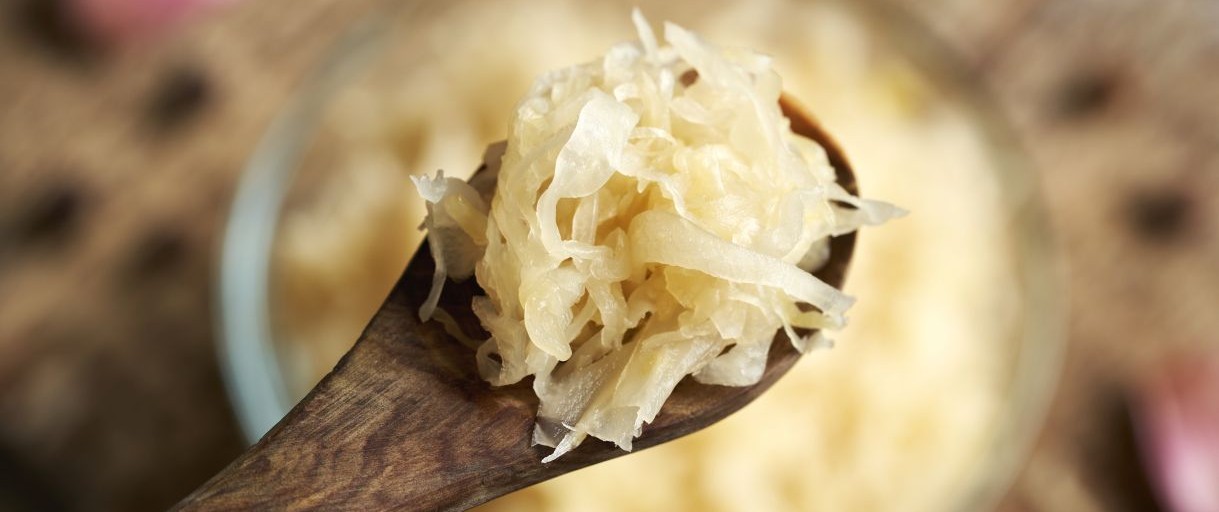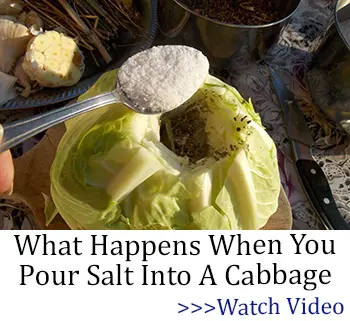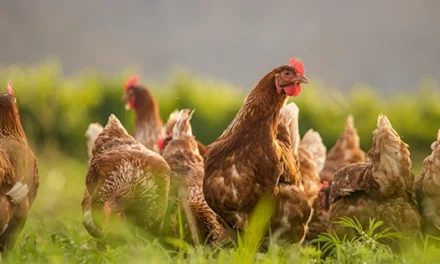Fermented cabbage is one of the simplest and most rewarding foods you can make at home. It’s a centuries-old preservation method that enhances flavor, extends shelf life, and boosts the nutritional value of cabbage. Whether you’re looking to add probiotics to your diet, store food long-term, or simply enjoy a tangy homemade condiment, learning how to ferment cabbage is a skill every self-sufficient homesteader should master.
If you’re new to fermentation, it’s best to start by understanding the basics. Before you begin, take a moment to read this guide: Fermentation 101. This will help you grasp the fundamentals of the process and ensure success in your first batch.
Why Ferment Cabbage?
Fermentation is an ancient technique used to preserve food before refrigeration existed, and it remains one of the best ways to store cabbage for months at a time, better even than the Amish fridge. The process not only keeps cabbage from spoiling but also transforms it into a probiotic-rich food that supports digestion and overall gut health. The fermentation process increases the availability of vitamins, enhances flavor, and introduces beneficial bacteria that help your body absorb nutrients more efficiently.
Another reason to ferment cabbage is self-sufficiency. If you grow your own food, fermenting cabbage is an excellent way to use up an abundant harvest without relying on refrigeration or freezing. Properly fermented cabbage can be stored for months in a cool place, making it an essential food preservation method for anyone serious about self-reliance.
How to Ferment Cabbage
Making fermented cabbage at home is surprisingly easy. You need only a few ingredients and some patience to allow nature to do its work.
Ingredients:
- 1 medium head of cabbage (green or red, preferably organic)
- 1 1/2 tablespoons of non-iodized salt (sea salt or Himalayan salt works best)
- Optional: Caraway seeds, mustard seeds, or garlic for additional flavor
Equipment:
- A large mixing bowl
- A sharp knife or mandoline
- A fermentation jar or crock
- A weight (glass fermenting weights, a clean stone, or a small water-filled jar)
- A clean cloth or fermentation lid
Step 1: Prepare the Cabbage
Start by removing the outer leaves of the cabbage and setting them aside. These will be used later to cover the fermenting mixture. Cut the cabbage in half, remove the core, and then slice it into thin shreds. The thinner the shreds, the faster and more evenly the cabbage will ferment.
Step 2: Salt the Cabbage
Place the shredded cabbage in a large mixing bowl and sprinkle it with salt. Using clean hands, massage the salt into the cabbage for about 5–10 minutes. This process draws out the natural juices and begins breaking down the cell walls, creating a brine that is essential for fermentation. If you’d like to add spices or herbs, mix them in at this stage.
Step 3: Pack the Cabbage into a Fermentation Jar
Transfer the cabbage and its liquid into your fermentation jar or crock. Press it down firmly with your hands or a tamper to remove air pockets and submerge the cabbage under its own brine. If needed, add a small amount of additional filtered water to ensure the cabbage is completely covered.
Step 4: Weigh It Down
Use one of the reserved outer cabbage leaves to cover the surface of the shredded cabbage. Place a weight on top to keep everything submerged. This step is critical because exposure to air can cause mold and ruin the fermentation.
Step 5: Cover and Ferment
Cover the jar with a clean cloth secured with a rubber band, or use a fermentation lid to allow gases to escape while keeping contaminants out. Store the jar in a cool, dark place, ideally between 60-75°F (15-24°C).
Step 6: Monitor the Fermentation
Over the next several days, bubbles will begin to form, indicating the fermentation process is active. Check the cabbage daily to ensure it remains submerged. If you see any scum on the surface, simply skim it off with a clean spoon.
Step 7: Taste and Store
Fermentation times vary depending on temperature and personal preference. After 7 days, taste the cabbage to see if it has reached your desired tanginess. Some people prefer a mild flavor and stop fermentation after a week, while others let it develop for up to a month. Once satisfied, transfer the fermented cabbage to the refrigerator or a cool root cellar to slow fermentation and preserve the flavor.
Storing and Using Fermented Cabbage

Fermented cabbage can last for months if stored properly. Keep it in airtight containers in a cool place, and always use clean utensils when scooping out portions to avoid introducing unwanted bacteria. The longer it ferments, the tangier it will become, so keep that in mind when determining storage time.
This homemade probiotic powerhouse can be used in various ways. Add it to sandwiches, serve it alongside meats, mix it into salads, or enjoy it straight from the jar for a digestive boost. Unlike store-bought versions that are often pasteurized (killing off beneficial bacteria), homemade fermented cabbage is alive with health-promoting microorganisms.
Troubleshooting Issues With Fermented Cabbage
Fermenting cabbage is a natural process, but sometimes things can go wrong. If you notice any of the following, here’s what to do:
- Mold on top? It’s likely surface mold caused by exposure to air. Skim it off and ensure your cabbage stays submerged.
- Too salty? Next time, use slightly less salt, but keep in mind salt is necessary to prevent bad bacteria growth.
- Soft texture? High fermentation temperatures or over-fermentation can cause this. Keep your jars in a cooler area.
- Unpleasant smell? While fermentation has a strong aroma, it should never smell rotten or putrid. If it does, discard and start over.
Final Thoughts
Fermenting cabbage is an easy and effective way to create a nutritious, long-lasting food that supports both self-sufficiency and health. With just salt, cabbage, and time, you can produce a probiotic-rich staple that stores well and enhances a variety of meals. Once you’ve mastered the basics, you can experiment with different seasonings and variations to suit your taste. Start your first batch today and enjoy the benefits of homemade fermented cabbage for months to come.
Grandma’s Long-Lasting Bread and Butter Pickles
The Only Food That Grows Almost Faster Than You Can Eat It (Video)
Fermented Foods for Gut Health: A Prepper’s Guide to Building Immunity and Self-Sufficiency














